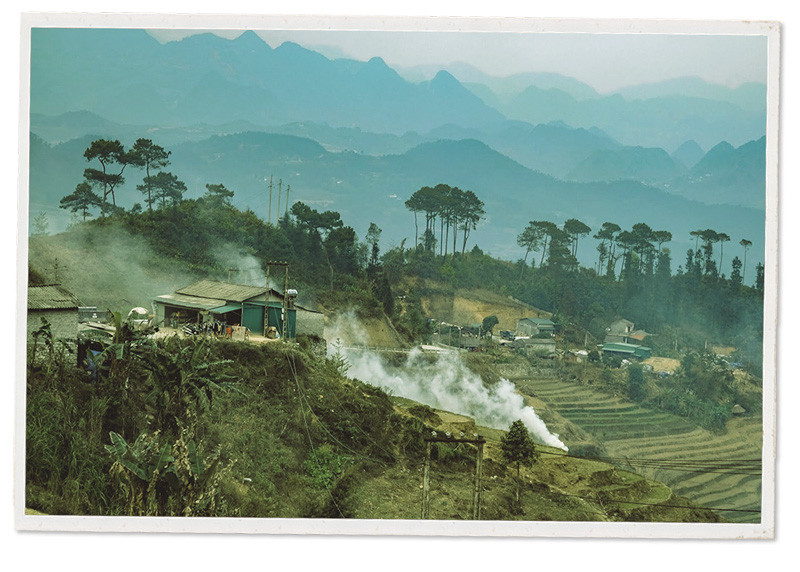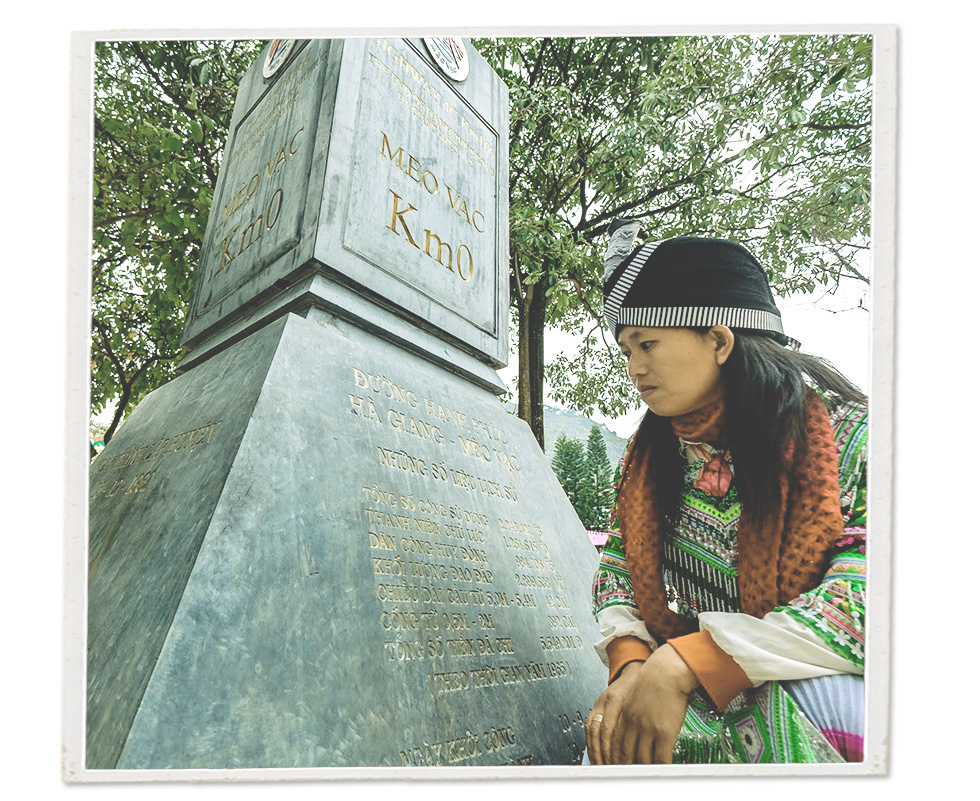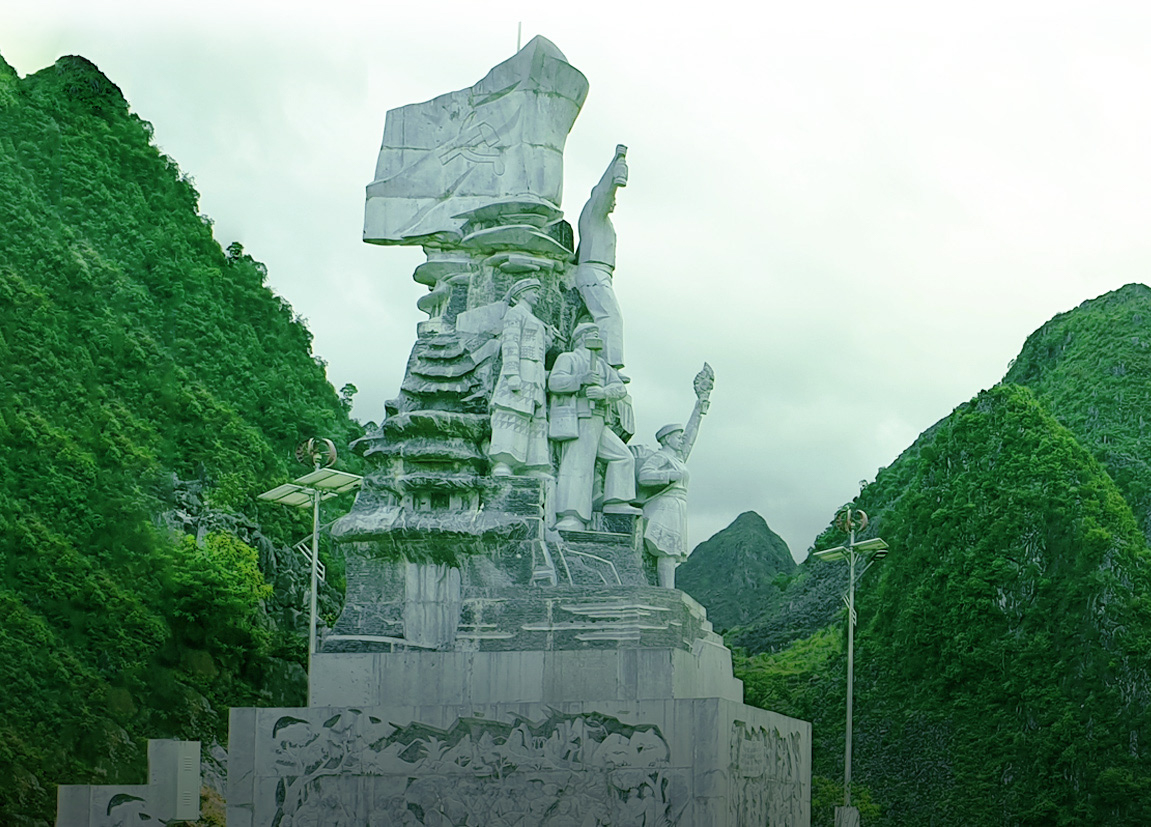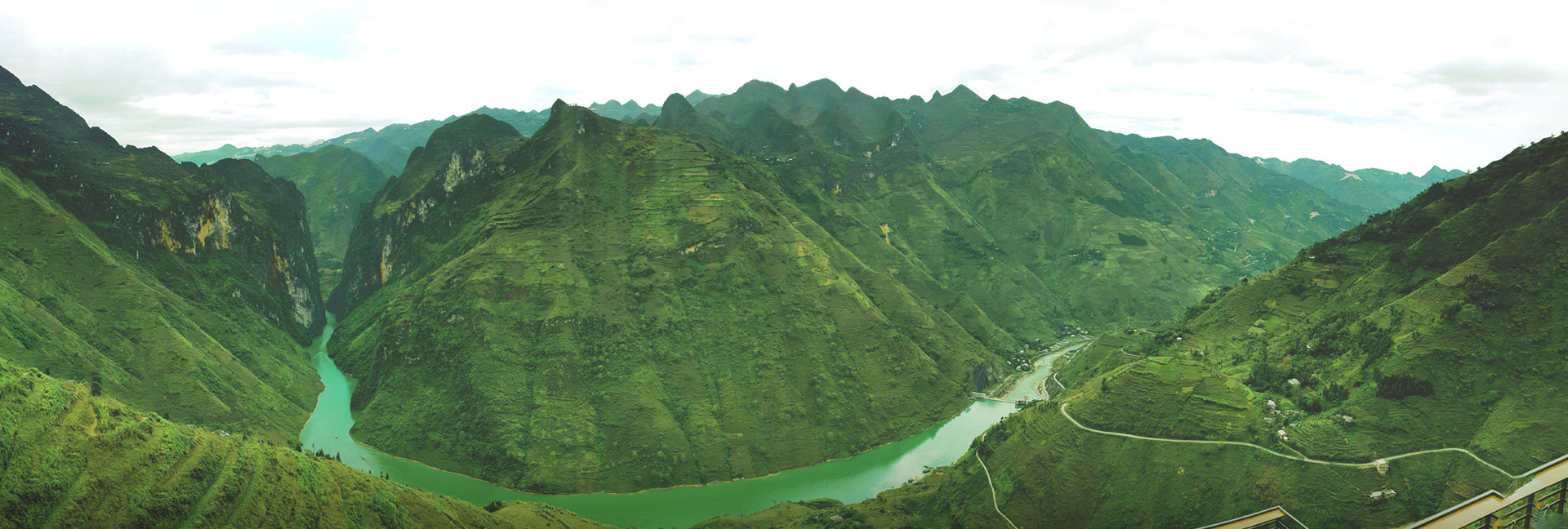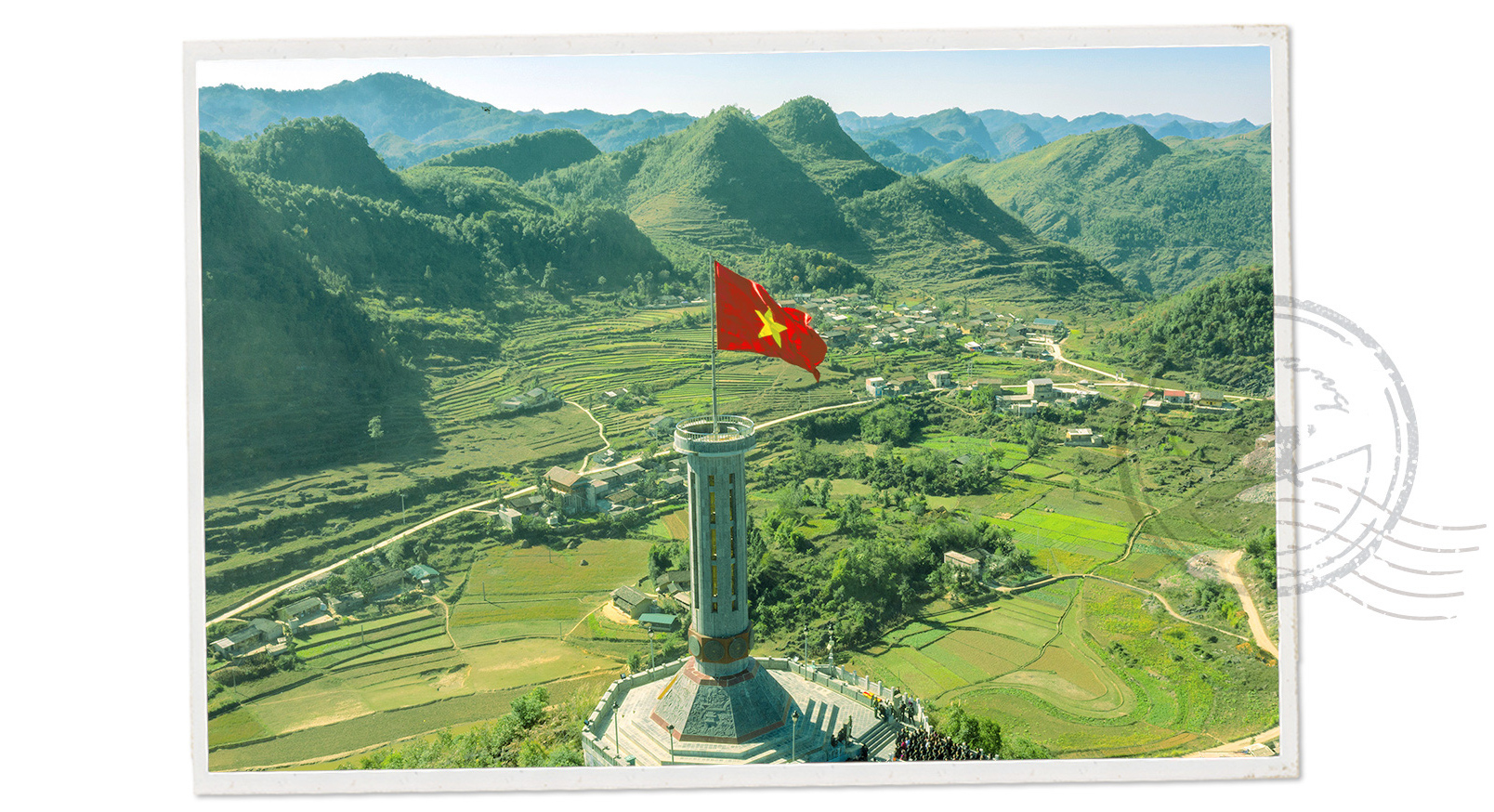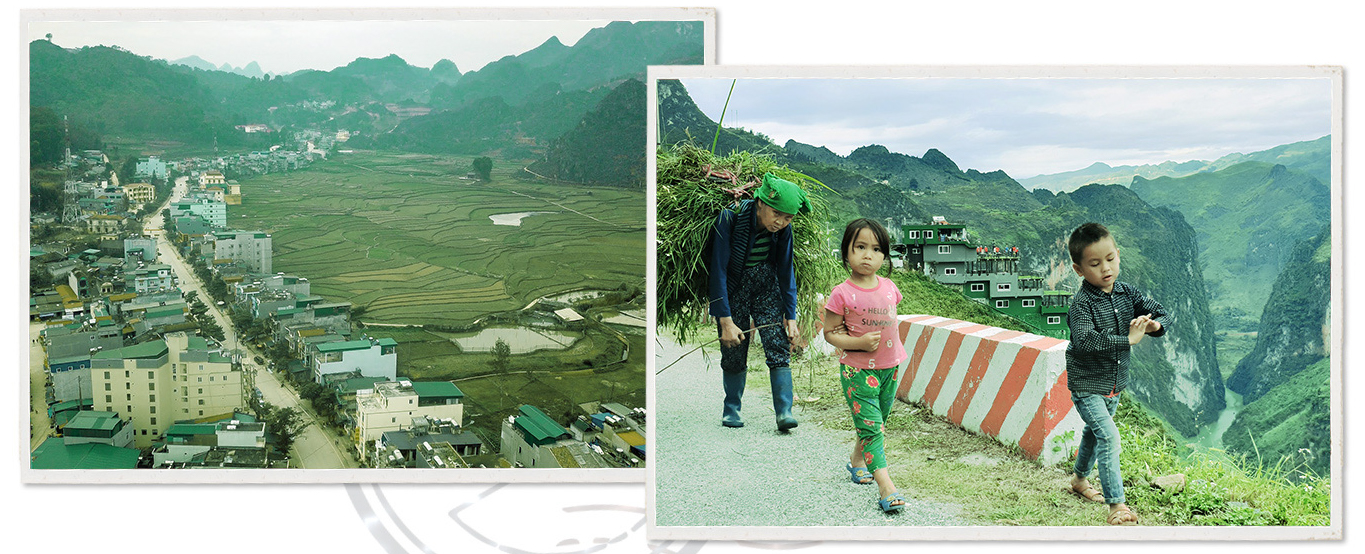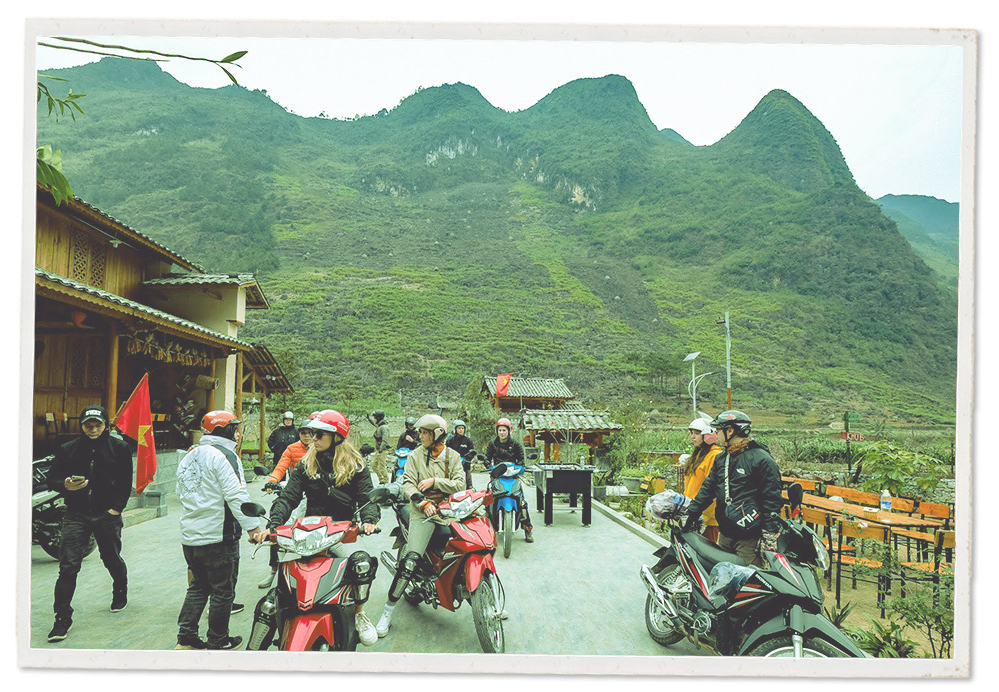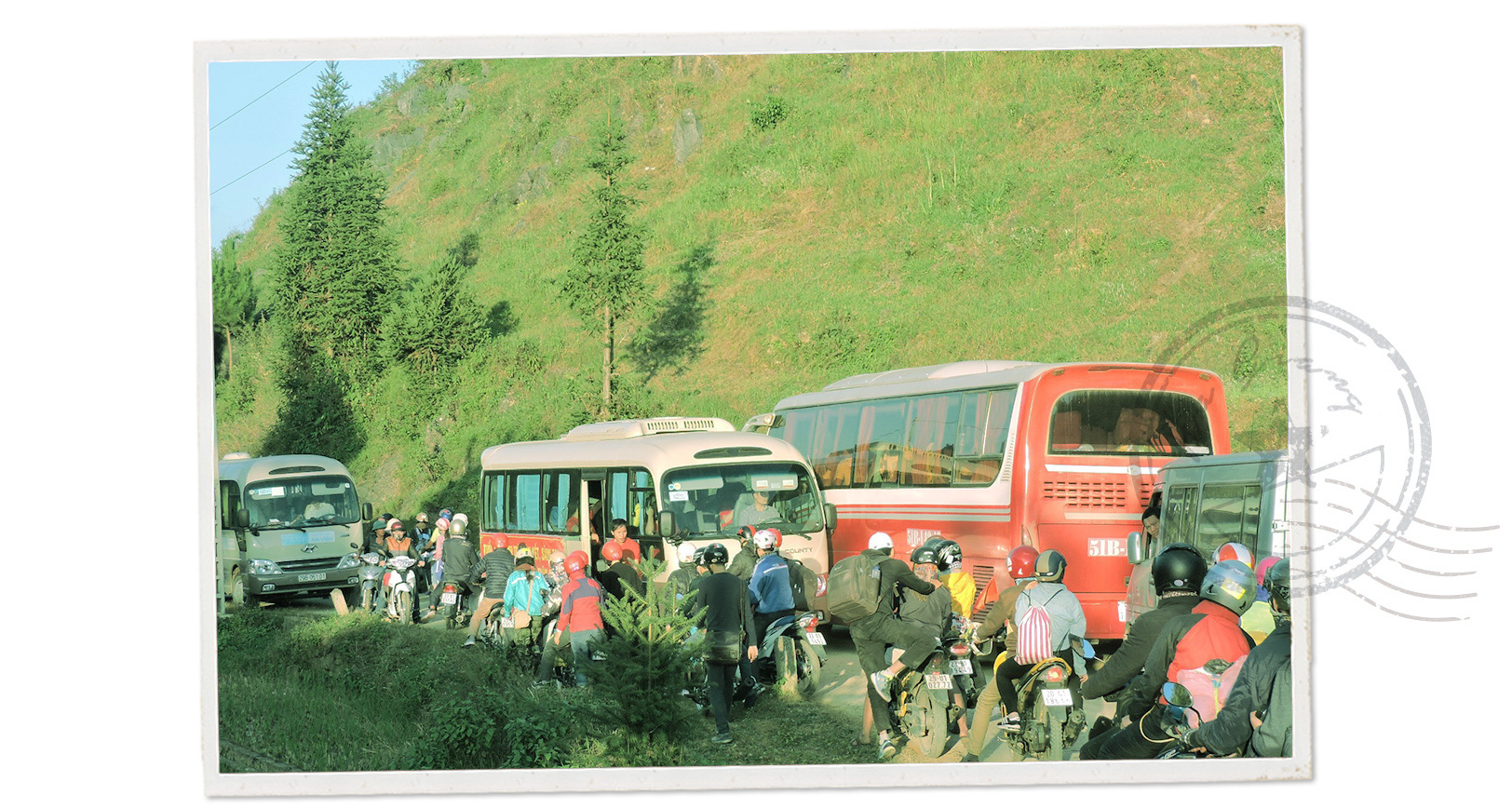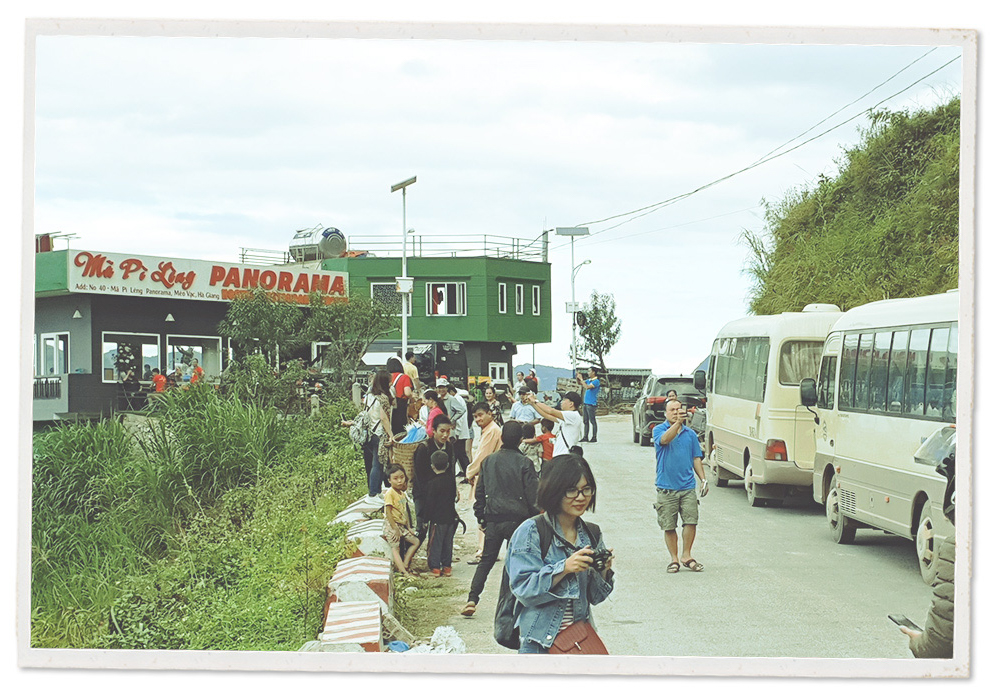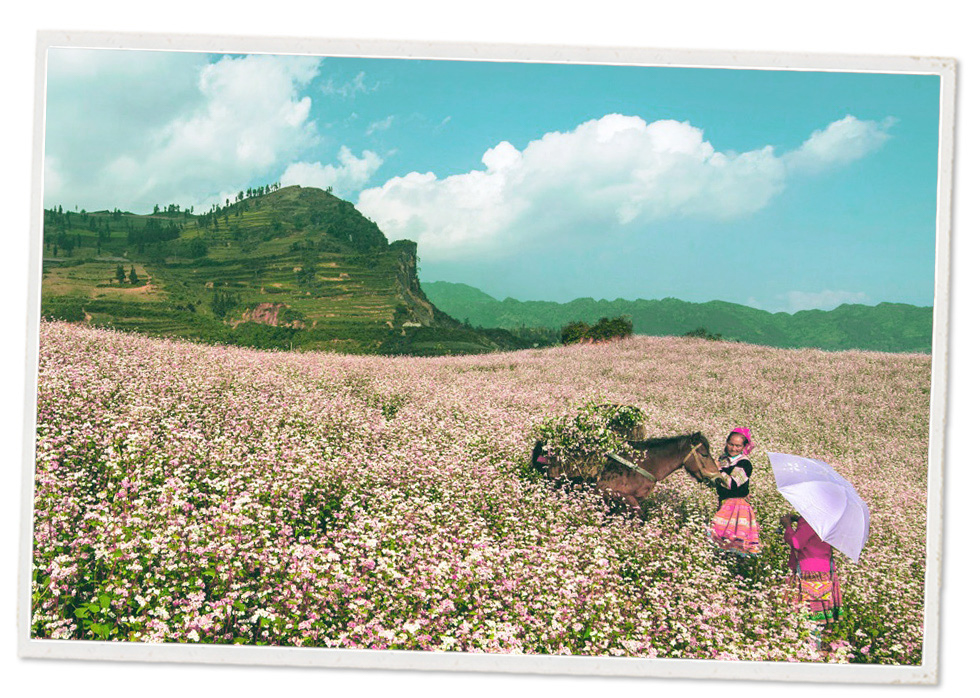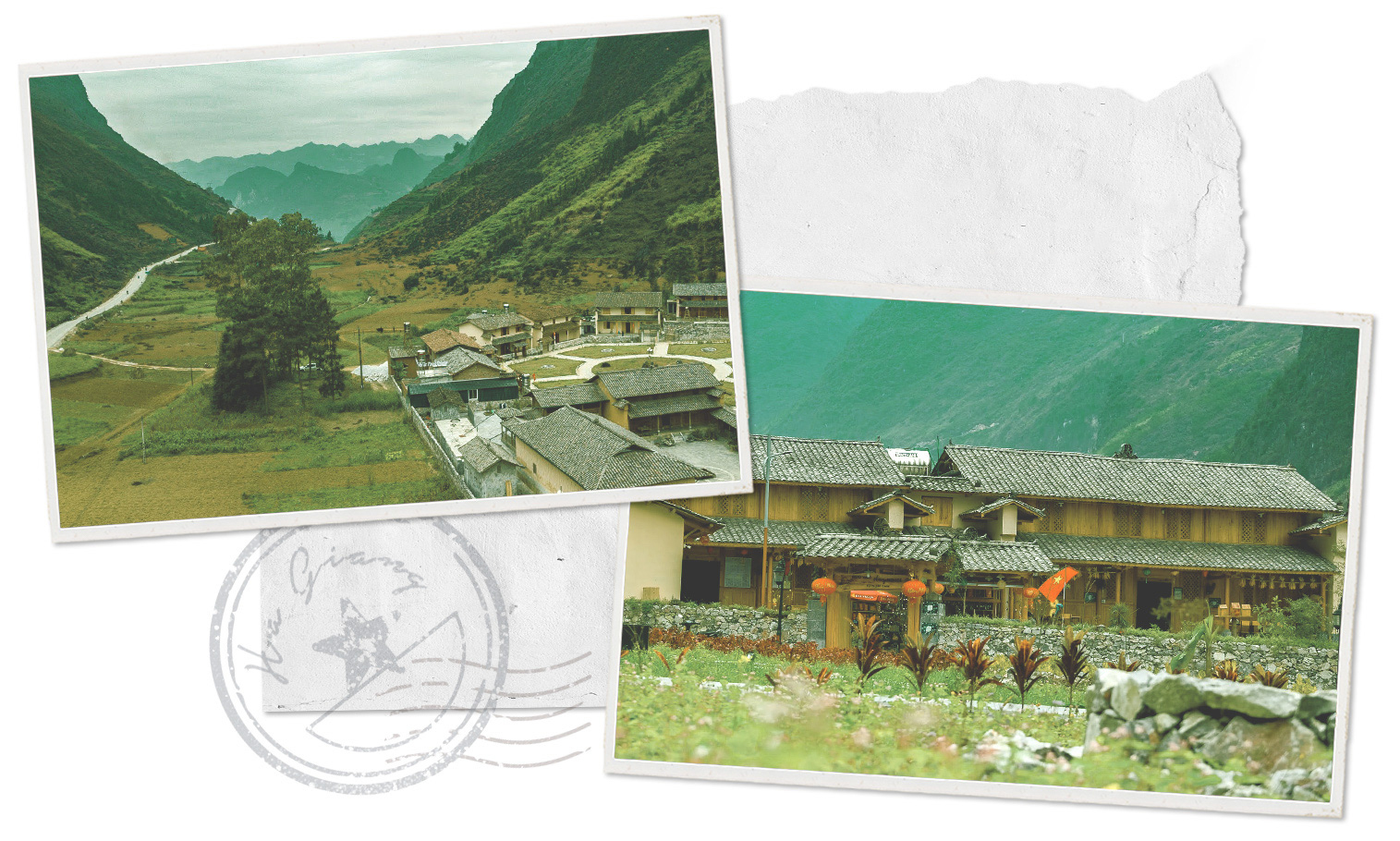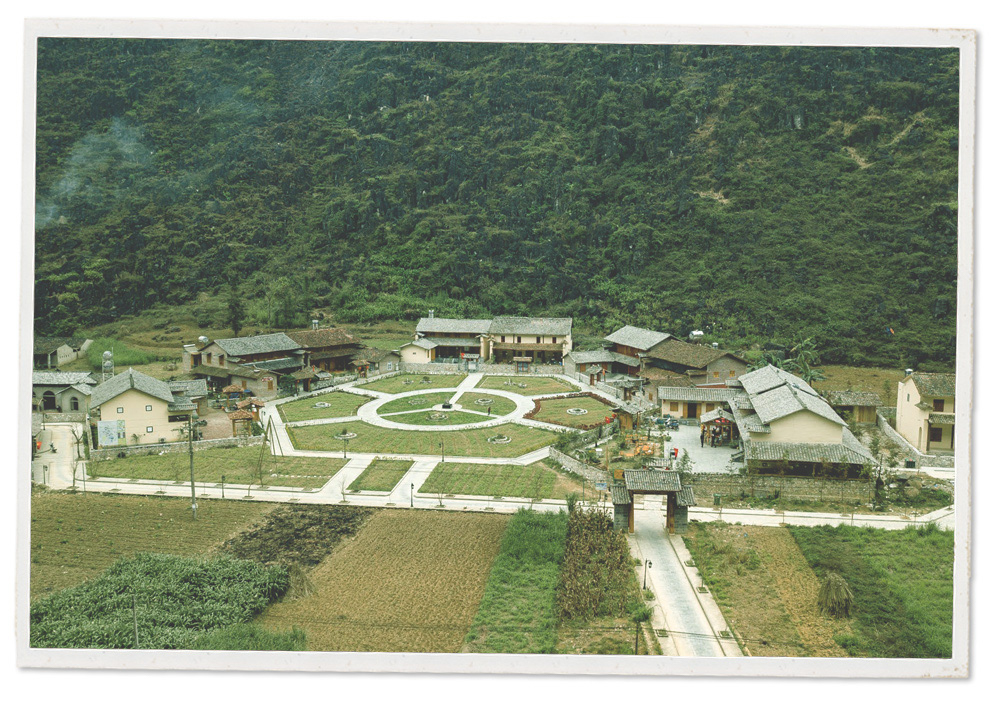This month marks the 55th anniversary of Vietnam’s ‘Ha Giang Loop,' a 185-kilometer road through the country’s mountainous north responsible for connecting ethnic minority communities with the modern world.
The Ha Giang Loop, a rugged stretch of road connecting Ha Giang City with Meo Vac District in the nation's northernmost province of Ha Giang, is the sole lifeline for many of the northern region’s ethnic minority communities.
In the fifty-five years since it was inaugurated in March 1965, thousands of workers, including 14 young volunteers who died building the road, poured blood, sweat, and tears into the construction and maintenance of this vital artery in the rural north.
|
|
| Terraced paddy fields, a common sight along the Ha Giang Loop in Ha Giang Province, Vietnam |
‘Happiness Road’
Workers first broke ground on the Ha Giang Loop on September 9, 1959. Two years later, President Ho Chi Minh named it ‘Happiness Road,’ hoping it would live up to the lofty expectations the people of Ha Giang had that the road would bring vast improvements to their lives.
Six years later, on March 15, 1965, the road was completed and it was time to turn those expectations into a reality.
To mark the 50th anniversary of the loop in 2015, thousands of former volunteers who helped build the road gathered in Ha Giang to share memories from their teenage years spent working on the historic project.
Those in attendance also took time to mourn the 14 volunteers who lost their lives during the construction of Happiness Road, all of whom are now considered martyrs by the state.
|
|
| Vietnamese volunteers work on the construction site for the Ha Giang Loop in Ha Giang Province, Vietnam in these file photos. |
Waiting coffins
The final 20 kilometers, traversing the magnificent Ma Pi Leng Peak, took an additional 24 months.
Thirty young volunteers were assembled to complete the pass over Ma Pi Leng, all of whom risked their lives to make the initial carvings into the mountain so that other workers could later pave a functional road over the peak.
These volunteers built the 20-kilometer pass suspended by ropes attached to rocky cliffs, chipping into the mountainside piece by piece using handheld tools.
|
|
| Youth volunteers work on the construction site for the Ha Giang Loop in Ha Giang Province, Vietnam in this file photo. |
It took them 11 months, from September 1963 until August 1964, to chisel away a 0.4-meter wide path. From there, explosives and mines were used to expand the tiny walkway into a road.
Nguyen Manh Thuy, vice-chairman of the provincial Former Youth Volunteers Association, recalled that each volunteer had been asked to take an oath at the beginning of each working day to pronounce their willingness to sacrifice their lives for the sake of their country – a risk so real that those in charge of the project had prepared eleven coffins just two kilometers from the construction site in case the cobweb of ropes strung along the cliffs as a safety net failed to do their job.
|
|
| An ethnic woman views a milestone marking 'kilometer zero' of the Ha Giang Loop in Meo Vac District, Ha Giang Province, Vietnam. |
Dao Ngoc Pham was one of the unfortunate souls whose life was sacrificed for Happiness Road.
On March 4, 1965, just one week before the road’s inauguration, Pham lost his balance and fell off Ma Pi Leng while saving two Mong ethnic locals, a father and son, from being crushed by a boulder.
A monument to Pham and the other martyrs now stands solemnly along the stretch of road that runs past Pai Lung Commune in Meo Vac. A bit further down the road sits a museum that offers insight into the construction of the road.
The monument, a towering sculpture made by volunteers holding hammers and wearing indigenous outfits, is a homage to those that sacrificed their lives, their youth, or both to transform Vietnam’s far-north.
|
|
| A monument dedicated to volunteers who died during the construction of the Ha Giang Loop in Ha Giang Province, Vietnam |
The allure of buckwheat flowers
The winding route between Ha Giang and Meo Vac is lined with sacred temples and cultural and historical sites, most of which sit against the backdrop of the stunning UNESCO-recognized Dong Van Karst Plateau.
Those who have traveled the length of Happiness Road describe the feeling of snaking a motorbike past the route’s wonders – Twin Mountains in Quan Ba District, the bamboo and evergreen forests of Yen Minh District, the Vuong Family Palace in Dong Van District, the Ma Pi Leng Pass, the Nho Que River, and the Tu San Canyon – as incomparable.
|
|
| Nho Que River as seen from atop Ma Pi Leng Peak in Ha Giang Province, Vietnam |
Though Vietnam’s northernmost point of Long Cu in Dong Van District is not technically part of the road, the Ha Giang Loop is one of the only access points for the stunning, sacred location.
The rocky landscape is all but chiseled into the blood of the people who live along the Ha Giang Loop. As the saying goes, “They live on rocks and die buried in rocks.”
|
|
| The Lung Cu flagpole in Dong Van District, Ha Giang Province, Vietnam |
In recent years, as the area has become more popular amongst tourists, the gold-hearted nature of the local people has begun to pose significant challenges for the province’s development.
Simply put, a clash between natural purity and infrastructural development is taking place in the region.
|
|
| Present-day Dong Van District (left) and local people on the Ma Pi Leng Pass (right) in Ha Giang Province, Vietnam |
|
|
| Foreign tourists are seen in Ha Giang Province, Vietnam. |
|
|
| Traffic congestion in Ha Giang Province, Vietnam |
Headlines of the illegally built Ma Pi Leng Panorama hotel along the Ma Pi Leng Pass in Dong Van and the leveling of a mountain to build a religious complex in Lung Cu have broken the hearts of many and inspired a push to develop more sustainable forms of tourism.
Tours focused around the province’s irresistibly beautiful buckwheat flower fields are combating the destruction of the area’s beauty by allowing locals to flock in the thousands to Ha Giang to catch a glimpse of the flowers’ magnificent bloom.
|
|
| The Ma Pi Leng Panorama building on the Ma Pi Leng Pass in Ha Giang Province, Vietnam is seen in this photo. |
“For a [buckwheat] flower festival, we have to tend to a few hundred hectares of flower fields. Buckwheat is not only grown for its flowers, which go to waste after each festival, but also for food. It’s a strategic winter crop in Dong Van,” said Hoang Van Thinh, chairman of Dong Van District, adding that the crop is often used to make buckwheat cookies and wine.
In a win-win agreement, local authorities have pledged to purchase harvested buckwheat crops from local farmers. In return, those farmers can collect entrance fees from visitors hoping to snap photos in the buckwheat fields during flowering seasons, Thinh explained.
|
|
| Ethnic women are seen in a field of blooming buckwheat flowers in Ha Giang Province, Vietnam. |
A dream village
Only a few kilometers away from the Ma Pi Leng Panorama hotel lies a fairytale Mong village designed to introduce tourists to the lifestyle of the local ethnic minority.
The 20 houses in the village, located in Meo Vac’s Pa Vi Ha Commune, are built according to the architectural styles of the Mong people and each owner must agree to various terms and conditions in order to be allowed to participate in the village's tourism community, such as incorporating modern amenities like kitchens, toilets, and bedrooms into their traditional houses.
|
|
| A cultural-tourism Mong village in Ha Giang Province, Vietnam |
The village is a sign that the area is taking a real shot at returning to its routes and escaping from the ugly shadow of commercially built facilities.
Hong Mi Sinh, the owner of one of the houses who now offers homestay service to visitors, said that his homestay is often booked by guests well in advance of their trip.
His goal is to offer each visitor a realistic experience of the region's indigenous cultures.
|
|
| A cultural-tourism Mong village in Ha Giang Province, Vietnam |
Like us on Facebook or follow us on Twitter to get the latest news about Vietnam!




